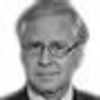
WASHINGTON – In 2008, the Democratic Party in the U.S. nominated one of its youngest candidates ever, and its first African-American. Everyone assumed that the choice of Barack Obama, 47, meant a new day and a new era.
But seven years later, the party’s 2016 contest is shaping up as a battle of aging white Baby Boomers for control of an ancient organization desperately in need of a fresh identity and a new wave of ideas, leaders and voters (though Hillary would be the first woman to win the nomination).
Democrats like to brag that they have been in continuous operation for two centuries, longer than any other major political party in the free world.
It certainly feels like it.
With the possible (perhaps even likely) entry of Vice President Joe Biden, 72, the contest will become an old-fashioned tale of palace intrigue, as he and Hillary Rodham Clinton maneuver for the favor and endorsement of the president.
And a three-way race with Sen. Bernie Sanders (I-Vt.) would feature the three sub-brands that have dominated and defined the Democratic Party on campus and in the country since the 1960s. In chronological order, here they are:
KENNEDY GUY: From a large, well-connected and prosperous family that had fallen on hard times, Biden was a prep-school kid and college athlete with affable blue-collar charm and a mixture of political instincts and faith in Catholic “social gospel.” In other words, a Kennedy Democrat and fan of touch football.
An elected official since 1973, Biden is at one with the party’s ancestral big-city tribes: labor unions, Black mayors, Irish, Jewish, Italian, Greek and other business people. If he runs, his closest advisers tell The Huffington Post, he will do so with a sense of moral urgency about the Democrats’ failures to close the ever-widening gap between the rich and the rest.
As for the world, he would run as the anti-ideological dealmaker in the Kennedy manner, with “street cred” from decades of travel and work on the Senate Foreign Relations Committee and two terms at President Barack Obama’s side.
"NEW LEFT" INTELLECTUAL: Sen. Bernie Sanders, 73, Brooklyn-born of the New Deal and '60s-era “New Left”; the “Democratic Socialist” with “non-negotiable demands” to tax the rich, shackle global corporations, block free-trade agreements, limit immigration (in the name of saving existing working-class jobs), bestow new government benefits on students and the poor, and oppose most military interventions.
COMMENCEMENT SPEAKER: Hillary Rodham Clinton, 67, quintessence of the “neo-liberal” Democratic establishment: in college, a critic of the “System” whom the faculty nevertheless trusted because she got all A's and didn’t lead a sit-down strike in the Administration Building. Religiously devout and a one-time Republican, molded by “rights” movements – on behalf of race, gender, children, sexual orientation – she also agreed with husband Bill that power lay in “neo-liberal” centrism. She's friendly to Wall Street (and its donors), in favor of the death penalty, champions free trade, has correct but not close relations with unions, supports a muscular foreign and military policy, and has a personal yen for wealth.
As recognizable as these three characters are, it’s not clear how convincing any of them can be.
Sanders is drawing the large crowds, and the allegiance of some of the same kinds of voters who idolized Obama in 2008. But Sanders has drawn the ire of the Black Lives Matter movement, which argues that Bernie’s Scandinavian socialist model is fatally blind to the racism and intolerance that are the most important cause of global economic inequality.
Clintonism, with its faith in the power of a cautiously regulated marketplace to lift all boats, seems to many Democrats to be just as outdated. The so-called “Washington Consensus” that emerged in the Bill Clinton years held that business investment would yield not only profit but also democracy in post-communist societies. The main result is that the rich got richer.
As for Biden, the question is whether the Kennedy model can still sell, and if so, whether he is the man to do it after so many years of life and service. His advisers say he still has the passion and purpose and what one called “bold, go-big” ideas to create a more just society.
No one doubts his heart or his sincerity; he is the least political lifelong politician in history.
But he has made a lot of compromises over a 43-year career in Washington. Perhaps the most damaging in today’s political context is a 1994 crime bill he authored that is now regarded as the proximate cause of the “mass incarceration” of minorities (and doubling of the U.S. prison population since).
If Biden is to have a chance, he’ll have to somehow reach out to minority voters, who so far seem cool to or even estranged from Sanders and Clinton.
He’d also have to somehow reach out to a new version of the party that is out there waiting to be born. It is a yet-to-be-defined mashup of Black Lives Matter; pro-immigration activism; non-European cultural consciousness; tolerance of all religions, lifestyles and genders; genuine urgency about the fate of the planet; confidence in technology, social media and the sharing economy; and skepticism about America’s right, power and duty to lead the world.
Forging and leading that new coalition is not going to be easy, no matter what your age. It seems unlikely that the Three Musketeers of the Baby Boom can do it.
To paraphrase the Rolling Stones from 1964, time isn’t on their side.
